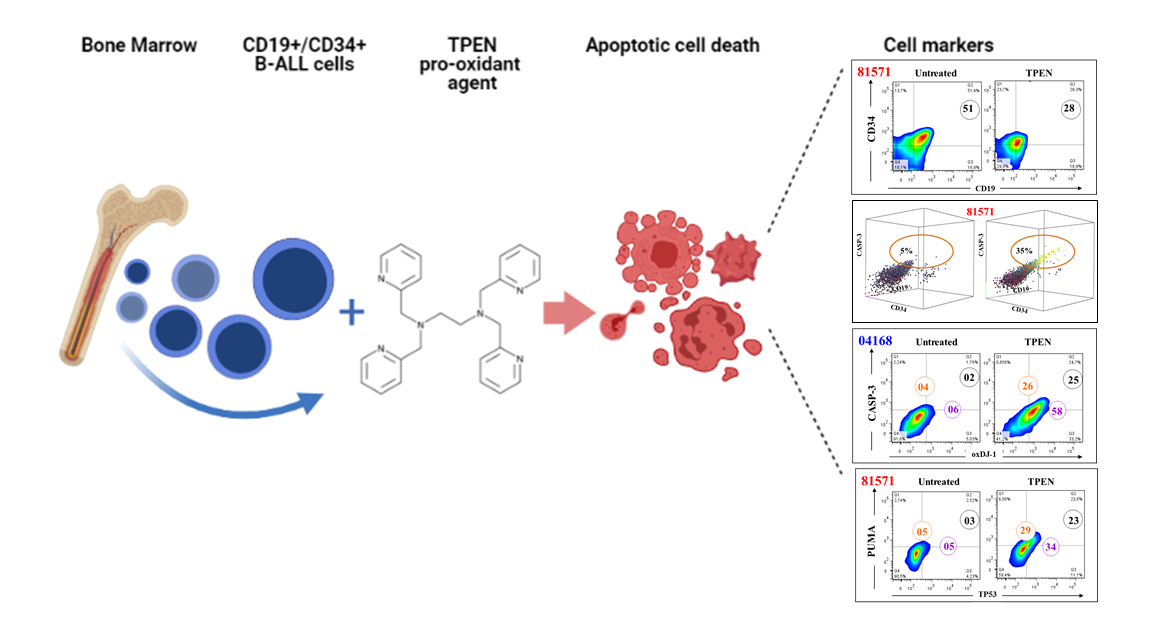B-cell acute lymphoblastic leukemia (B-ALL) is a hematologic disorder characterized by the abnormal proliferation and accumulation of immature B-lymphoblasts arrested at various stages of differentiation. Despite advances in treatment, a significant percentage of pediatric patients with precursor B-ALL still relapse. Therefore, alternative therapies are needed to improve the cure rates for pediatric patients. TPEN (N, N, N’, N’-tetrakis(2-pyridylmethyl)-ethylenediamine).is a pro-oxidant agent capable of selectively inducing apoptosis in leukemia cells. Consequently, it has been suggested that TPEN could be a potential agent for oxidative therapy. However, it is not yet known whether TPEN can selectively destroy leukemia cells in a more disease-like model, for example, the bloodstream and bone marrow (BM), in vitro. This investigation is an extension of a previous study that dealt with the effect of TPEN on ex vivo isolated/purified refractory B-ALL cells. Here, we evaluated the effect of TPEN on whole BM from nonleukemic patients (control) or pediatric patients diagnosed with de novo B-ALL or refractory B-ALL cells by analyzing the hematopoietic cell lineage marker CD34/CD19. Although TPEN was innocuous to nonleukemic BM (n=3), we found that TPEN significantly induced apoptosis in de novo (n = 5) and refractory B-ALL (n = 6) leukemic cell populations. Moreover, TPEN significantly increased the counts of cells positive for the oxidation of the stress sensor protein DJ-1, a sign of the formation of H2O2, and significantly increased the counts of cells positive for the pro-apoptotic proteins TP53, PUMA, and CASPASE-3 (CASP-3), indicative of apoptosis, in B-ALL cells. We demonstrate that TPEN selectively eliminates B-ALL cells independent of age, diagnosis status (de novo or refractory), sex, karyotype, or immunophenotype. Understanding TPEN-induced cell death in leukemia cells provides insight into more effective therapeutic oxidation-inducing anticancer agents.

